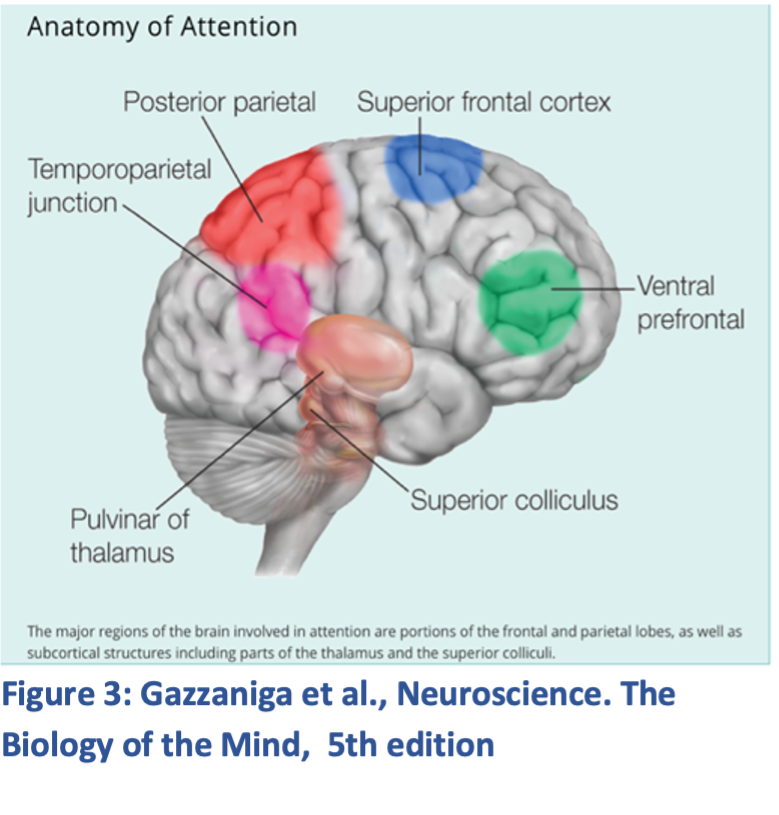Brain regions that play an important role in the orienting system are the superior parietal cortex and the temporal-parietal junction (see Figure 1). The superior parietal cortex becomes active during the actual directing of attention on something in the physical or mental space. There is often co-activation with an area of the frontal cortex responsible for controlling eye movements (Frontal Eye Fields). This is because we often direct our eyes towards the things we direct our attention to. The temporal-parietal junction plays a role in “disengaging” our attention so that it can be shifted to new or other relevant information. The neurotransmitter that seems to play an important role in the orienting system is Acetylcholine (ACh). The cluster of neurons responsible for the production and release of Acetylcholine is also located in the brainstem (see Figure 3).
